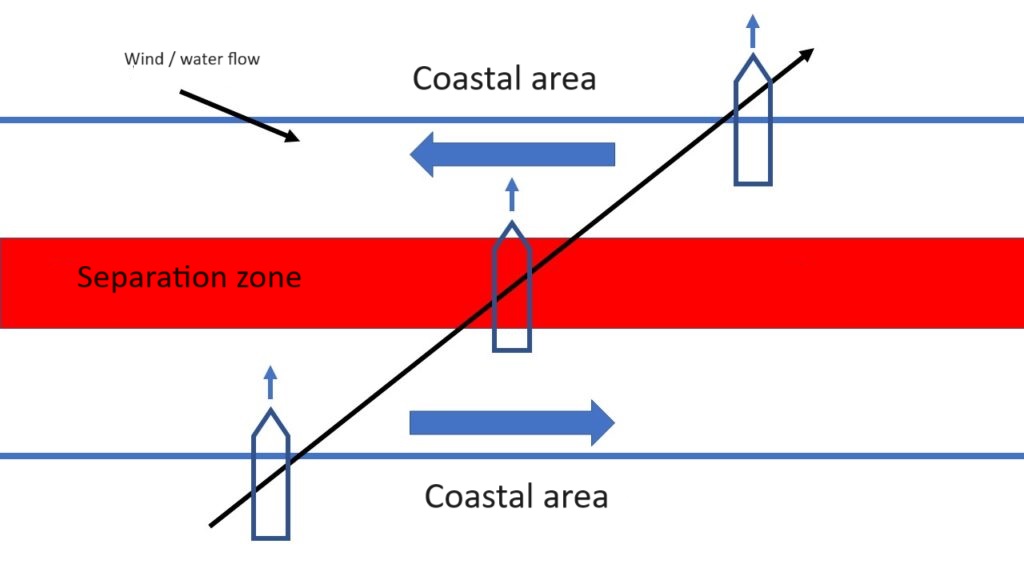Good to know – Driving and crossing traffic separation zones

In shipping, a traffic separation scheme (TSS) is a separation of lanes in which there are different directions of travel.
These separations are often found in places where traffic is particularly narrow and there is a high risk of collision. Well-known examples are the English Canal or the German Bight.
In a way, such areas are constructed like a highway with separate lanes and a separation zone in the middle. The respective routes may only be used on the right-hand side of the separation zone.
You can find the exact regulations for driving in these areas in the Collision Prevention Regulations.

The general rule is:
If possible, you should enter at the ends of the one-way lane. If you enter from the side via the outer boundary line, you should do so at as small an angle as possible to the general direction of traffic.
Crossing a traffic separation scheme should be avoided wherever possible. In the event of a crossing, this should be carried out with the keel direction at right angles to the general direction of traffic. With wind and current, this may mean that the course over ground is not exactly at right angles to the direction of traffic.
If a crossing power-driven vessel coming from starboard crosses the course of a power-driven vessel on a one-way route in a traffic separation scheme, the power-driven vessel must take evasive action on the one-way route. The normal evasion rules therefore apply (starboard before port).
Sailing vessels and vessels less than 20 m in length must not endanger the passage of an engine-powered vessel following the one-way lane. The risk of collision should be reduced by sailing on the outer right-hand edge. If a collision is nevertheless imminent, the general rules of evasion apply, i.e. starboard before port.



1 Comment
Tikidem dawit · 21. January 2025 at 6:24
good